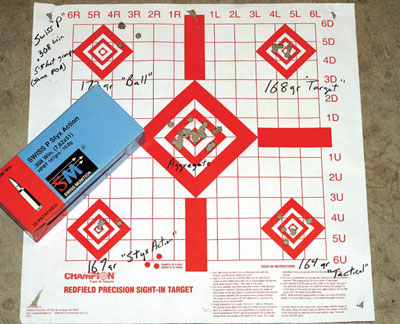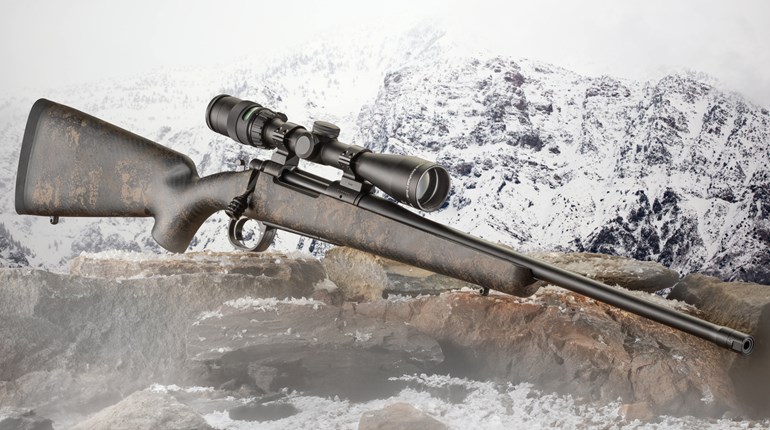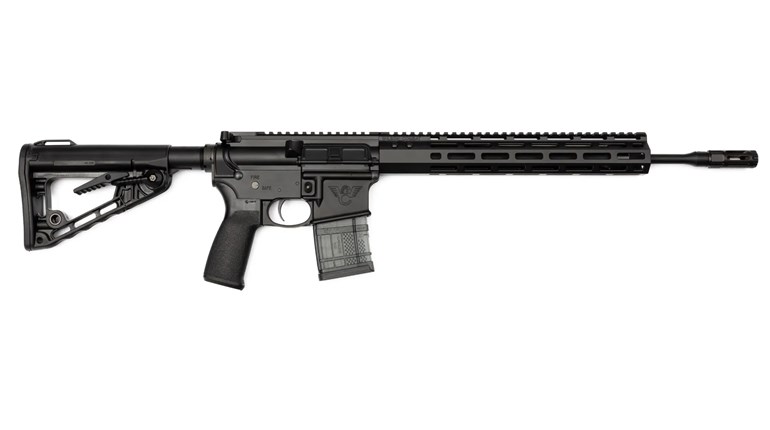
Whether we're aiming purely for accuracy, live-tissue performance or a healthy mixture of both, our longarms simply shoot some loads better than others. (Reliability is always our first concern, regardless of ammo type or intended use, so that issue is a given here.) Most shooters consider performance and then select a primary load for their rifles' most serious uses.
The problem is the best performing ammunition usually comes at premium prices, turning a hobby into a money leech that requires a second job. Handloading can provide a cost-effective alternative, but it requires additional time and investments in material and space. The solution: Find a less-expensive load that matches the trajectory of your favorite and use itfor your bulk-shooting needs.

Finding a ballistic match to your main load at distances out to 100 yards is fairly easy. Identify bargain ammo with similar bullet weights (usually with FMJ projectiles) and then shoot small amounts of each load against your regular zero. Check for deviation in point of impact, ensure proper function and note accuracy.
Targets beyond 100 yards will begin to expose differences in the way each load handles the combined effects of aerodynamic drag, gravity and specific atmospheric conditions. Nearly every 5.56 NATO ammunition manufacturer offers a relatively inexpensive 55-grain FMJ load. This stuff is great for close-range work and general plinking, but it is seldom accurate enough to replicate the downrange performance of specialized ammo, particularly from barrels with a 1:7-inch rate of twist.
All of my 5.56 barrels shoot Black Hills Ammunition's 62-grain Barnes TSX load very well. The TSX bullet is an excellent performer through mild barriers and soft tissue, expanding well even at longer ranges. I trust this cartridge when the chips are down, no questions asked. However, it is not inexpensive enough for me to be able to afford shooting a bunch every time I practice.
I like to use my 5.56 guns out to 300 yards and have found surplus M855 ammunition from Federal (ATK-Lake City) and the NATO equivalent SS109 from Prvi Partizan (Serbia) both match the Black Hills 62-grain TSX trajectory to that distance. Now, I have the option of using surplus 62-grain military ammunition (more affordable than ever) for my general-purpose shooting, while reserving the Black Hills load for zero checks and more serious work. Finding a pair of cartridges like this also allows me to keep a couple magazines loaded with my primary ammunition while extra mags in the go-bag are loaded with the less-expensive, general-purpose ammunition that will work in a pinch.
The ammunition industry provides a few tailor-made options for shooters looking to satisfy their multiple cartridge needs. Hornady offers less-expensive steel-cased versions of some of its popular brass-cased loads in its Steel Match line. I've found these bargain-priced cartridges perform well in rifles that can digest the steel cases. RUAG Ammotec of Switzerland has offered "coordinated trajectory" precision loads to military and law-enforcement snipers for several years, and is slowly making these options available to civilians. My past military experience with RUAG products was very good, but until recently, I had never tested its matched trajectory lines.
I acquired a scant 20 rounds each of four different Swiss P .308 Win. loads and performed a simple test to check for point of impact differences using the same zero. Despite what RUAG claims, I did not believe loads with bullet designs ranging from flat-tipped solids to BTHP match profiles and weights ranging from 167 to 176 grains would produce the same trajectories out to 200 meters. Naturally, I decided to push the loads out to 300 yards to learn that three of the four loads actually group very closely.
I shot two, five-shot groups of each ammo type at 100 and 300 yards, respectively, through my own precision .308 Win. rifle with an 18-inch barrel. This AR's favorite factory load (Federal Premium Gold Medal Match with 175-grain Sierra MatchKings) usually prints .5-inch groups at 100 yards. The one load that did not match any of the others was RUAG's 176-grain Ball. Elevation was 1 inch high while windage was 1.2 inches right at 100 yards. The company's 168-grain Target, 167-grain Styx Action and 164-grain Tactical loads all impacted within a scant .25 inch of each other at 100 yards.
Each of these projectiles is intended for different uses, yet they have very similar trajectories. The company's idea for precision shooters to have different ammo options without having to change zeros or holds appears to have merit, especially for budget-minded police departments and specialized military units. I plan to do more testing with this ammo after seeing the potential for good accuracy in my rifle, provided it doesn't take another three years of begging to procure some.
We're all struggling to pinch pennies these days, so finding less expensive ways to enjoy our hobbies, professions and passions is always helpful. If you find inexpensive factory ammo that mimics the performance of your premium loads, incorporating it into your shooting is one way to economize. If you luck out and find a good multi-purpose load as I have, use it to supplement your primary ammunition for training, plinking and maybe even for apocalyptic stockpiling.





































